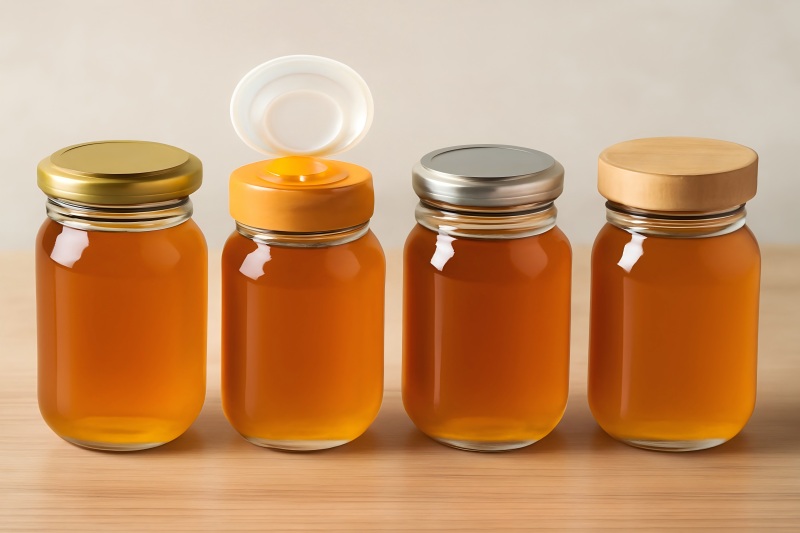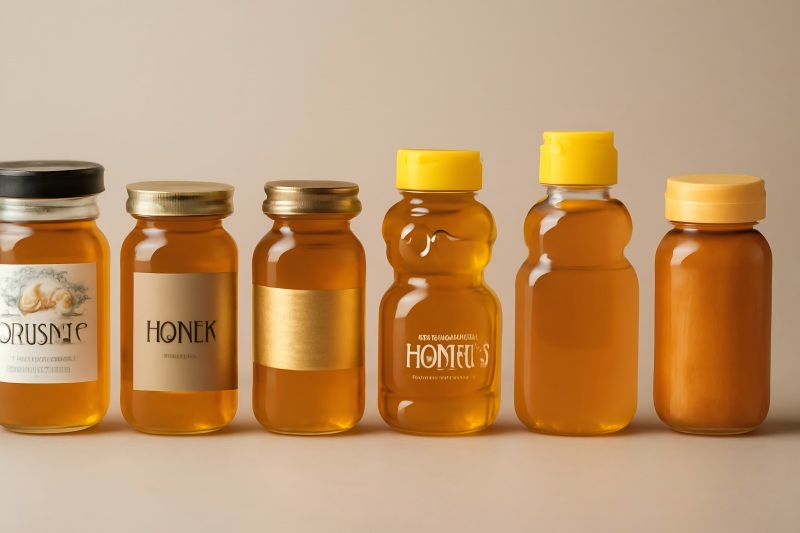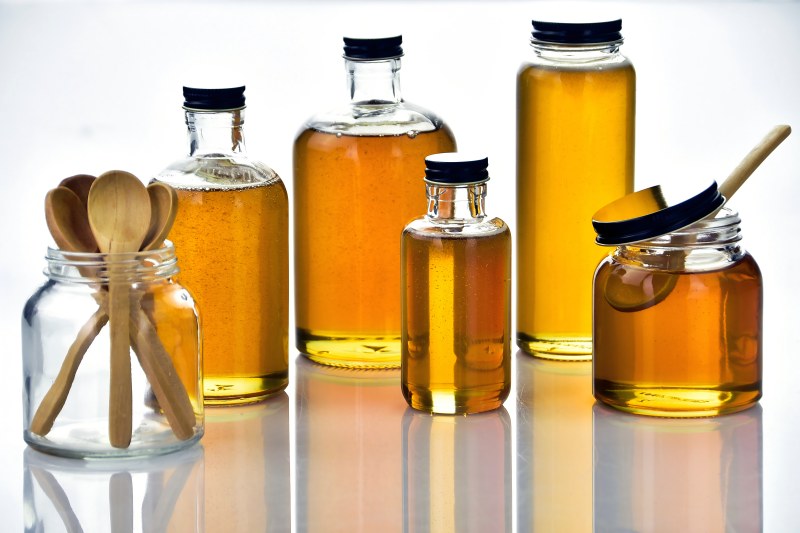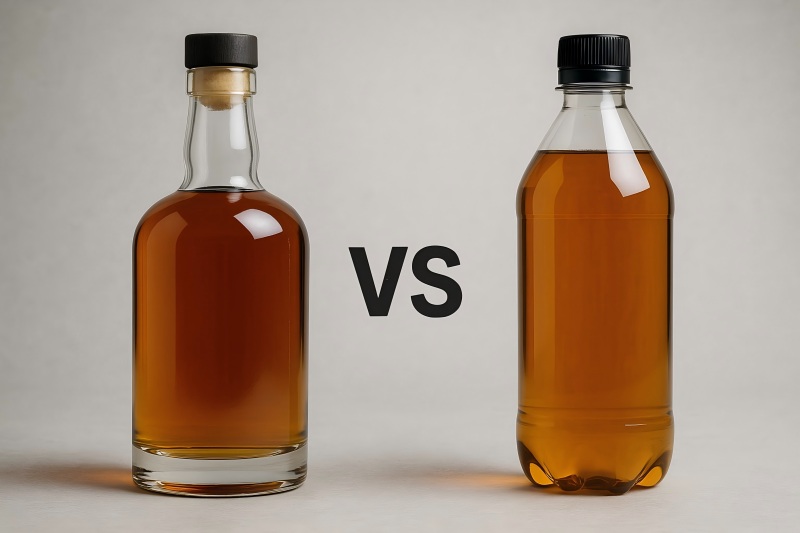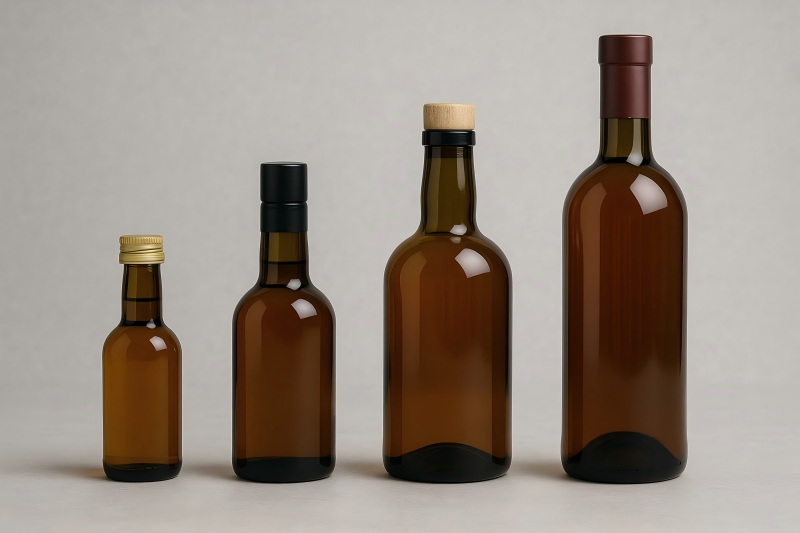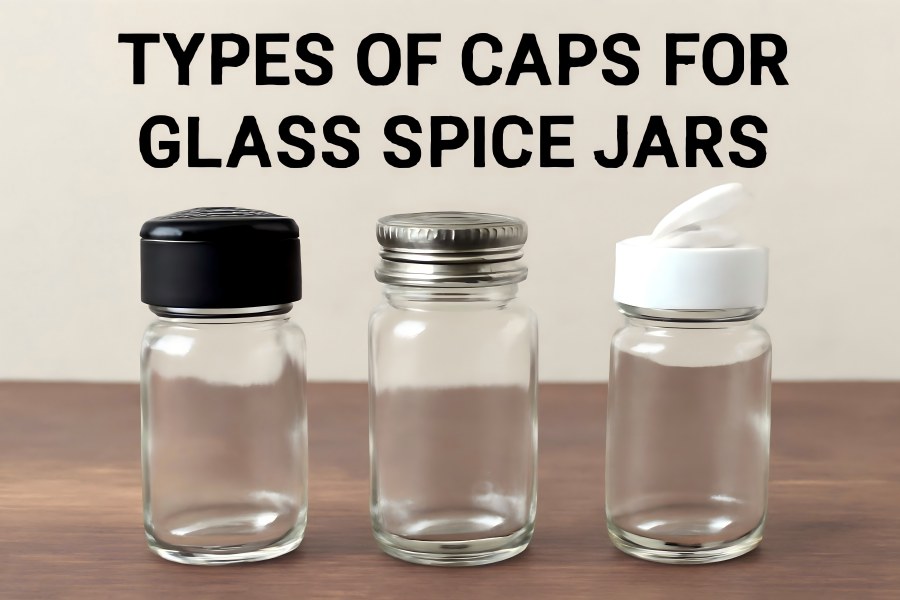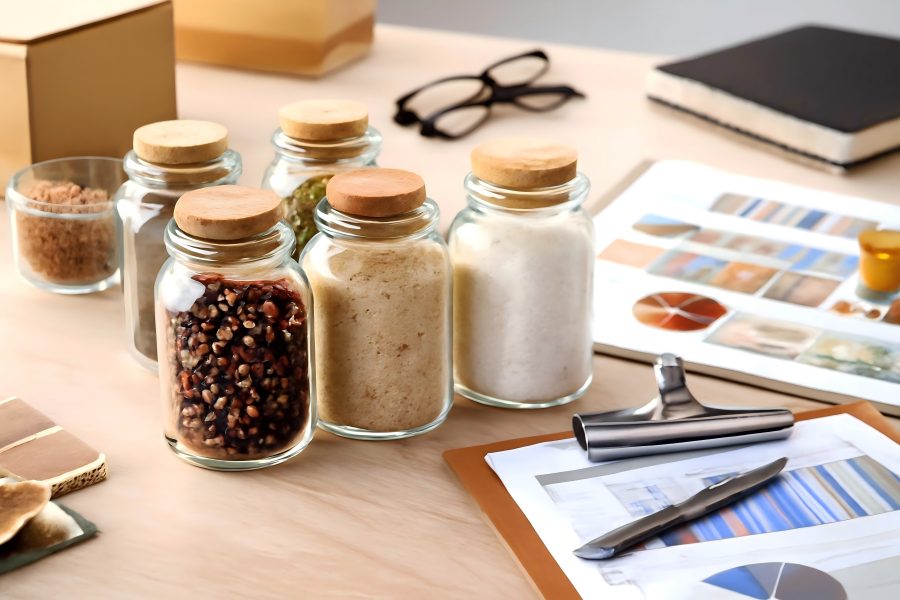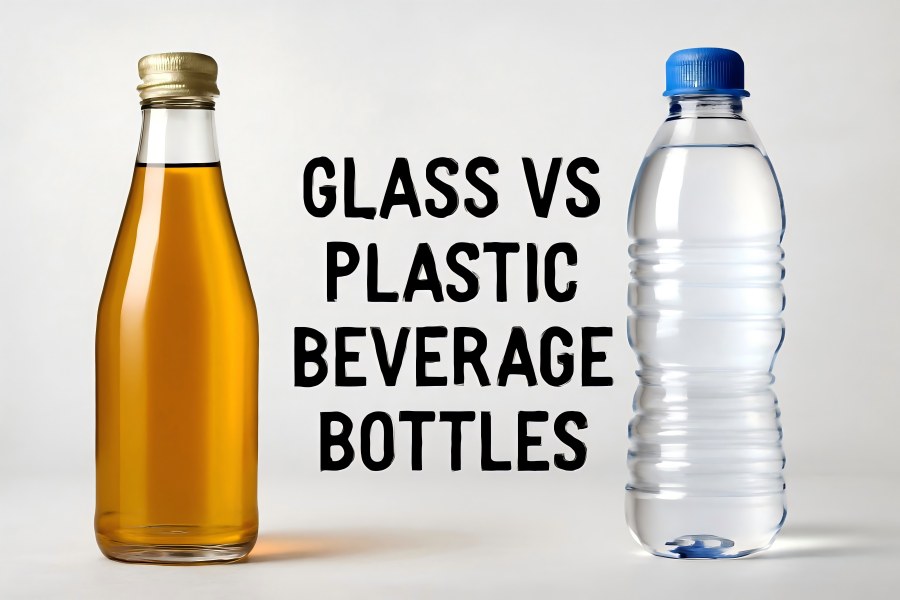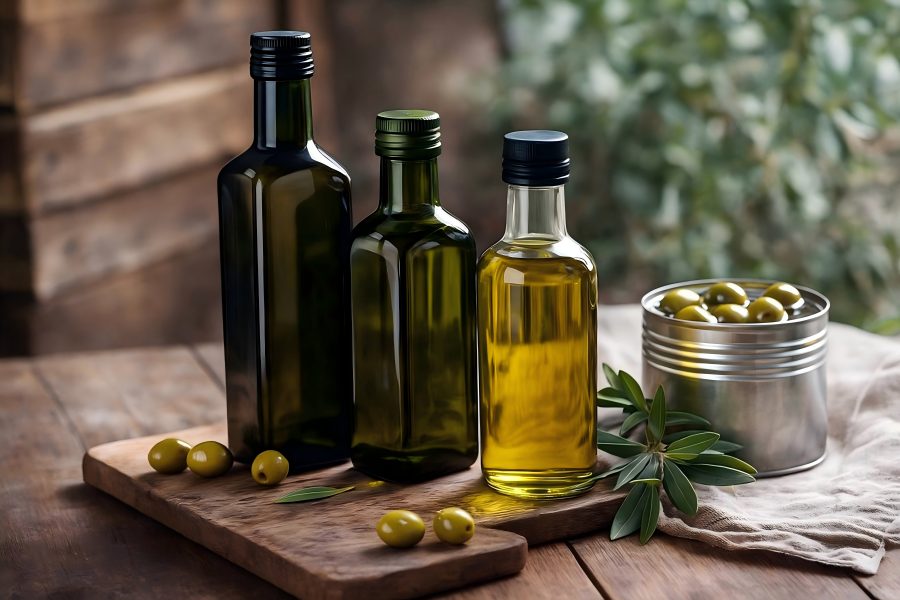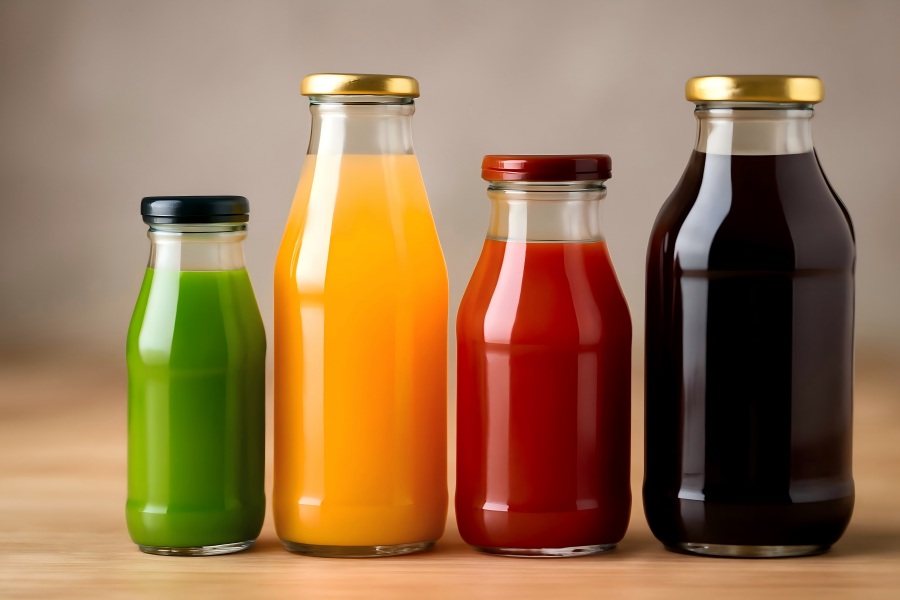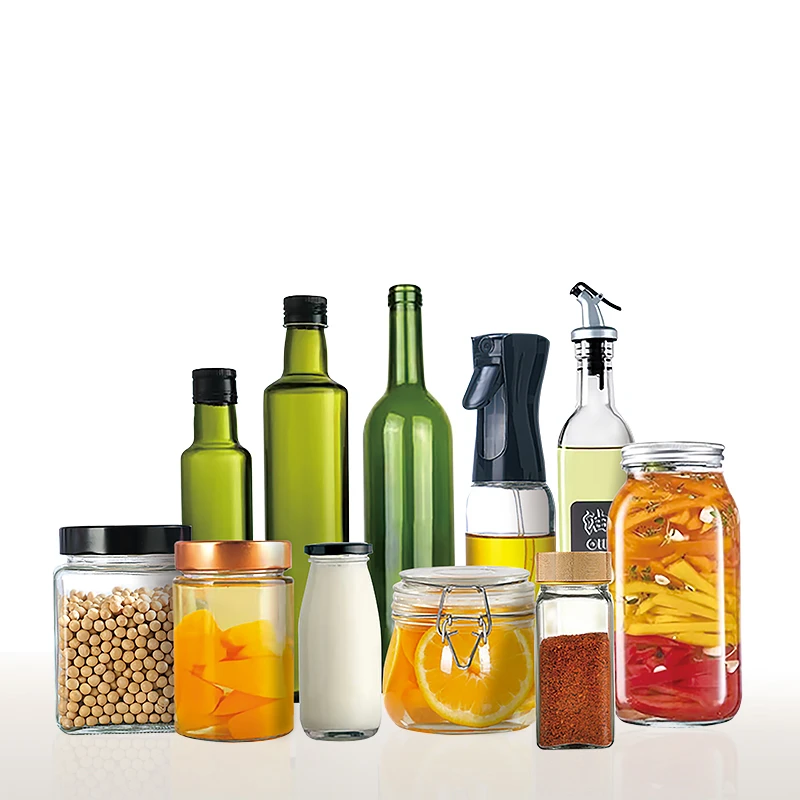Types of Caps for Glass Spice Jars: Shaker, Screw, and Flip-Top Compared
Glass spice jars are crucial in both culinary establishments and domestic kitchens. While the glass preserves the spice’s quality, the cap plays a key role in maintaining freshness, ease of use, and integrity.
The cap type also affects consumer experience by controlling spice flow, ensuring proper sealing, and providing easy storage. Whether you’re in retail, manufacturing, or choosing the best option as a consumer, understanding the differences between shaker, screw, and flip-top caps is crucial.
This article compares these three cap types, highlighting their features, benefits, and ideal uses to help you make an informed choice.
Why Cap Type Matters for Spice Jars
The type of cap you choose for your glass spice jar affects not only the aesthetic appeal but also functionality. The right cap can help maintain the freshness and flavor of the spices inside, prevent contamination, and provide convenient dispensing options. Here’s why the type of cap is so important:
- Sealing & Freshness: Spices are vulnerable to air, moisture, and light. A cap that forms an airtight seal helps maintain their freshness, keeping the flavor and aroma intact for extended periods.
- Ease of Use: Different caps offer varying levels of ease for dispensing spices. Some allow for quick pouring, while others provide precise control, which is especially important for powdered spices.
- Durability & Resealability: A durable cap ensures that the jar can be used multiple times without breakage or loss of functionality. A good cap also ensures that the jar can be resealed tightly to prevent contamination.
- Manufacturing & Packaging Considerations: The cost of caps affects production, and manufacturers must balance quality, cost, and consumer preference when selecting the appropriate cap.
In the next sections, we’ll explore the three common cap types—shaker, screw, and flip-top—by examining their features, pros, cons, and ideal use cases.
Overview of the Three Common Cap Types
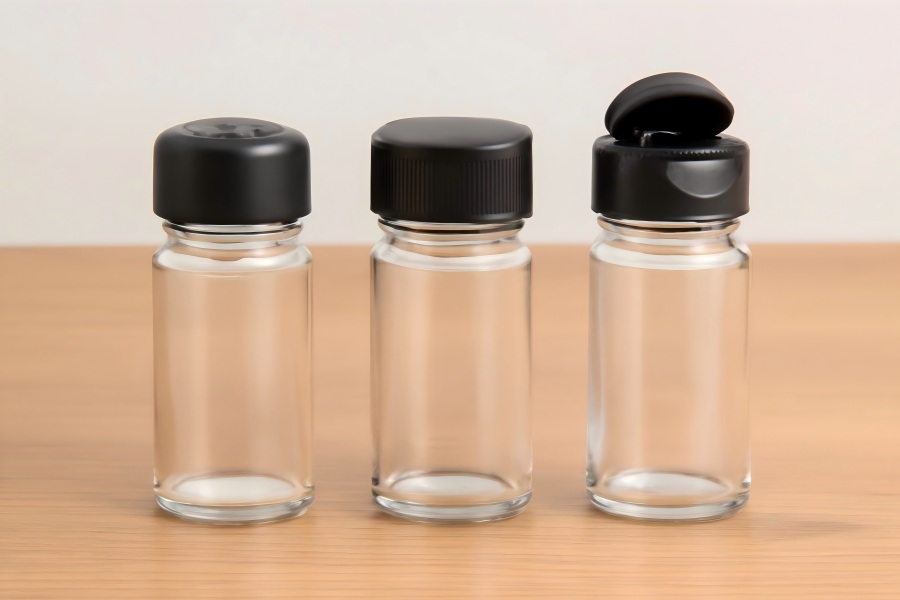
Shaker Caps
Shaker caps are a popular choice for dispensing powdered or finely ground spices. They typically feature a mesh or perforated design that controls the flow of the spice, allowing for an even distribution with minimal mess.
- Design: Shaker caps are often equipped with small holes or a removable shaker insert. The shaker insert can be a mesh or perforated disc that regulates the flow of powder or herbs. For powdered spices that must be administered in precise amounts, this form is perfect.
- Materials: Shaker caps are generally made from plastic, although hybrid designs incorporating metal can be found in higher-end products.
- Common Use Cases: Shaker caps are ideal for spices like pepper, cinnamon, paprika, garlic powder, and chili powder, where an even and controlled dispensing method is required.
Shaker caps are especially popular due to their straightforward design, making them a convenient choice for both retail environments and everyday use in kitchens. However, they may not provide the best seal, and the quality of the shaker insert can affect the dispensing performance.
Screw Caps
Screw caps, also known as threaded caps, are a versatile and widely used option for spice jars. These caps offer a tight, secure seal, preventing air from entering the jar and ensuring the freshness of the contents. Screw caps are especially favored for their durability and resealability.
- Design: Screw caps feature a threaded closure that screws onto the neck of the jar. They may contain an inner liner to maintain a tight seal that prevents moisture and air from entering.
- Materials: Common materials for screw caps include plastic and metal. Plastic screw caps are generally used for everyday use, while metal screw caps are often used for premium or decorative packaging.
- Common Use Cases: Screw caps are perfect for entire spices like peppercorns, cumin seeds, and mustard seeds. They are also used for spice blends and larger granules, where easy access is not as critical.
Screw caps offer excellent sealing and are particularly valuable when long-term freshness is essential. They can be cumbersome for frequent use in cooking, though, because they need both hands to open and close.
Flip-Top Caps
Flip-top caps combine the benefits of both shaker and screw caps. These caps feature a hinged or snap-top design that allows for easy, one-handed access to the contents. Flip-top caps are especially popular for everyday spices that require quick access during cooking.
- Design: The flip-top cap typically features a small opening for pouring or shaking. Some flip-top caps include an internal shaker insert or a pour spout to improve dispensing control.
- Materials: Like shaker and screw caps, flip-top caps are primarily made from plastic, though hybrid designs can feature metal for enhanced durability.
- Common Use Cases: Flip-top caps are perfect for frequently used spices, such as garlic powder, onion powder, basil, oregano, and dried herbs. They provide convenience without compromising on dispensing control.
Flip-top caps offer the best of both worlds: easy access and relatively good sealing. However, the hinge mechanism may wear over time, especially with frequent use. Additionally, the tightness of the cap seal may vary depending on the quality of the hinge and fit.
Comparison of Cap Types
To help you make an informed decision, here’s a detailed comparison table of the shaker, screw, and flip-top caps based on several key performance factors.
| Factor | Shaker Cap | Screw Cap | Flip-Top Cap |
| Sealing & Freshness | Moderate—depends on insert | Excellent—a tight seal is possible | Good—depends on hinge fit |
| Dispensing Control | Excellent for powders | Flexible—pour or shake | Convenient, but volume varies |
| Ease of Use/Convenience | Easy to shake, but needs a jar flip | Easy to open/close, but slower for frequent use | Fast one-handed access |
| Resealability & Longevity | Good if the shaker insert & cap are maintained | Excellent—tight fit and durability | Fair—hinge wear over time |
| Cleaning / Reusability | Moderate—multiple parts | Easy to clean, simple shape | Complicated due to the hinge/spout |
| Cost & Manufacturing | Low–medium—simple molds | Low–medium—simple threading | Medium-to-higher hinge molds |
Material & Quality Considerations for Caps
The material used for the cap can greatly influence its durability, functionality, and environmental impact. Below are some common materials used for spice jar caps:
- Plastic: Lightweight and cost-effective, plastic is the most common material used in shaker, screw, and flip-top caps. However, plastic may not always provide the same premium feel or sealing capabilities as metal.
- Metal: Metal caps, which are often composed of stainless steel or aluminum, provide longevity and a high-end look. They provide excellent sealing qualities, making them suitable for high-end spice jars.
- Hybrid Materials: Some caps feature a combination of plastic and metal to take advantage of the benefits of both materials. This combination generally results in a more durable yet lightweight product.
In addition to material choice, the quality of the cap’s design is vital. Caps that fail to provide an airtight seal can lead to moisture contamination and the degradation of spices. Caps with poorly designed hinges or shaker inserts can also impact dispensing control.
Use-Case Scenarios — Which Cap Type Matches Which User Need
The right cap for your spice jar depends on the type of spice, the frequency of use, and the target consumer. Here’s a practical guide to help you decide which cap is most suitable for different scenarios:
- For Retail Spice Blends and Ground Herbs: Shaker caps are ideal for retail jars containing ground spices, as they allow consumers to sprinkle the spice in a controlled manner.
- For Whole Spices and Less Frequent Use: Screw caps are best for whole spices, as they offer better sealing and ensure the spice stays fresh for longer periods.
- For Frequent Use in Cooking: Flip-top caps are the perfect solution for consumers who use spices frequently. The one-handed access and convenient dispensing make them ideal for kitchen use.
Manufacturing & Packaging Considerations
When selecting a cap for glass spice jars, manufacturers must consider several factors, including mold complexity, compatibility with jar neck designs, and cost. Below is a breakdown of these considerations:
- Mold Complexity: Shaker caps tend to have simpler molds due to their straightforward design. On the other hand, flip-top caps require more intricate designs, especially with hinge mechanisms.
- Compatibility: Ensuring the cap fits well with the neck design of the glass jar is essential for maintaining an airtight seal. The thread on the screw cap or the hinge mechanism on flip-top caps must align perfectly with the jar neck.
- Cost: Shaker and screw caps are generally more affordable than flip-top caps due to their simpler design. However, flip-top caps offer added convenience and may justify their higher cost in certain use cases.
Sustainability & Environmental Impact
Sustainability is gaining more significance in packaging design. Packaging solutions that promote recycling and are environmentally friendly are sought after by both producers and consumers. Here’s how different cap types measure up in terms of sustainability:
- Plastic Caps: Plastic is lightweight and inexpensive but has a higher environmental impact. However, plastic caps created from recycled materials or biodegradable plastics can offer a more ecological alternative.
- Metal Caps: Metal caps are more durable and reusable but are typically heavier and require more energy during production.
- Hybrid Caps: By combining plastic and metal materials, hybrid caps offer an ideal balance between durability and sustainability. Some businesses are now producing caps made from recycled or eco-friendly materials.
Cost Implications (Producer & Consumer Perspective)
The cost of the cap impacts the overall cost of the spice jar, which, in turn, influences the retail price. While shaker and screw caps are generally cheaper to produce, flip-top caps may increase the overall cost due to their more complex design.
For consumers, the cost difference between cap types is often negligible unless purchasing in bulk. However, for manufacturers, investing in higher-quality caps—such as screw or flip-top caps—can result in a better consumer experience and higher product value.
How to Choose the Right Cap for Your Glass Spice Jar
To choose the right cap for your glass spice jar, consider the following factors:
- Spice Type: For finely ground spices, a shaker cap is ideal. For whole spices, a screw cap is more appropriate. For spices used frequently in cooking, flip-top caps offer the best convenience.
- Consumer Preferences: Consider whether the target market values convenience, freshness, or aesthetic appeal. A screw cap may appeal to customers looking for long-term freshness, while flip-top caps are better suited for those seeking ease of use.
- Packaging Goals: If the goal is to preserve the spices’ freshness, screw or flip-top caps may be a better choice. If ease of dispensing is more important, a shaker cap is the best option.
Emerging Trends & Innovations
- Modular Cap Systems: Interchangeable caps are becoming more popular, offering consumers the flexibility to choose between different dispensing methods.
- Sustainable Caps: Many brands are shifting toward eco-friendly materials like biodegradable plastics or recyclable metals to reduce environmental impact.
- Hybrid Cap Designs: Manufacturers are developing hybrid caps that combine the best features of shaker, screw, and flip-top caps, providing consumers with versatile and convenient options.

